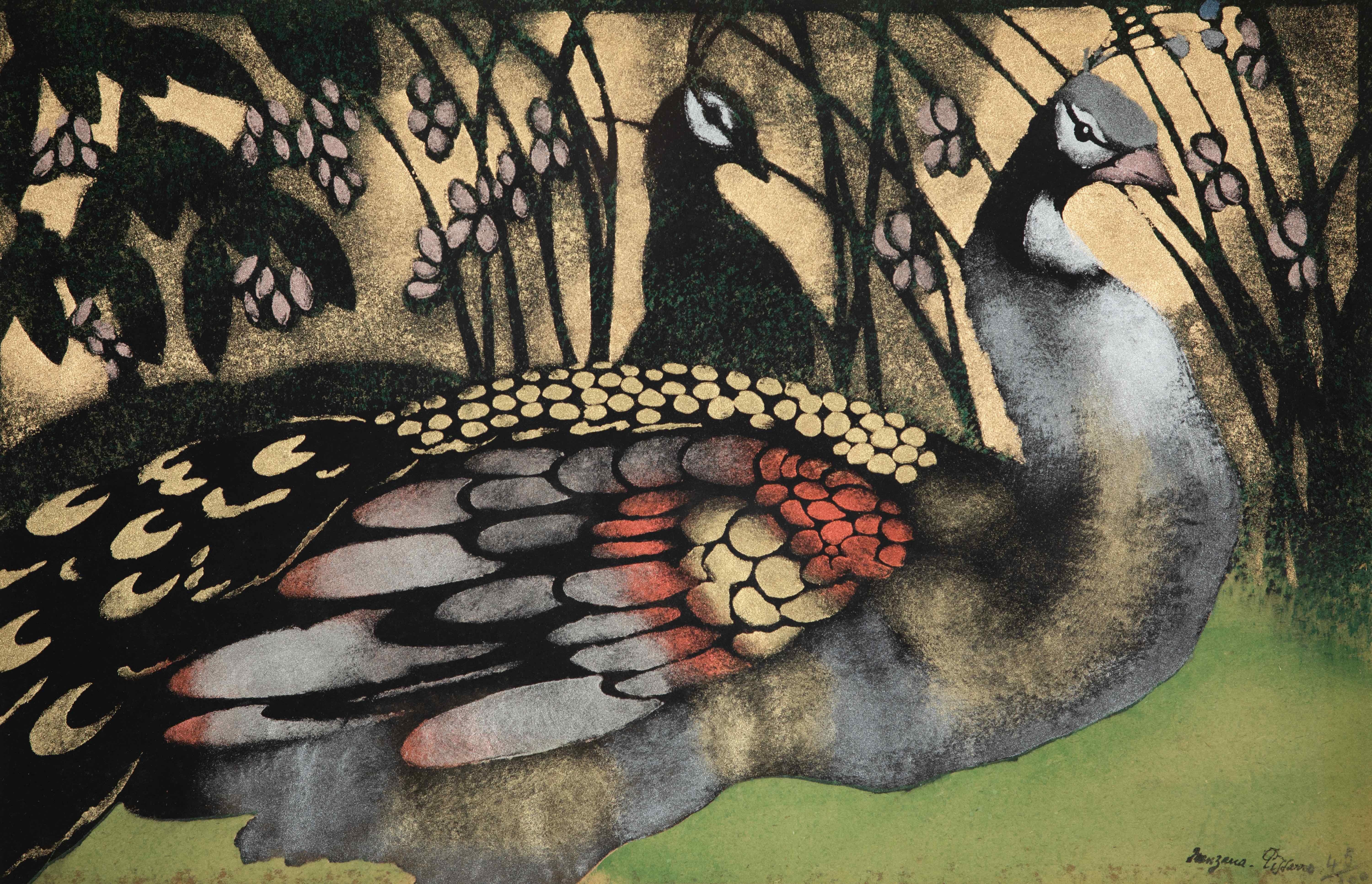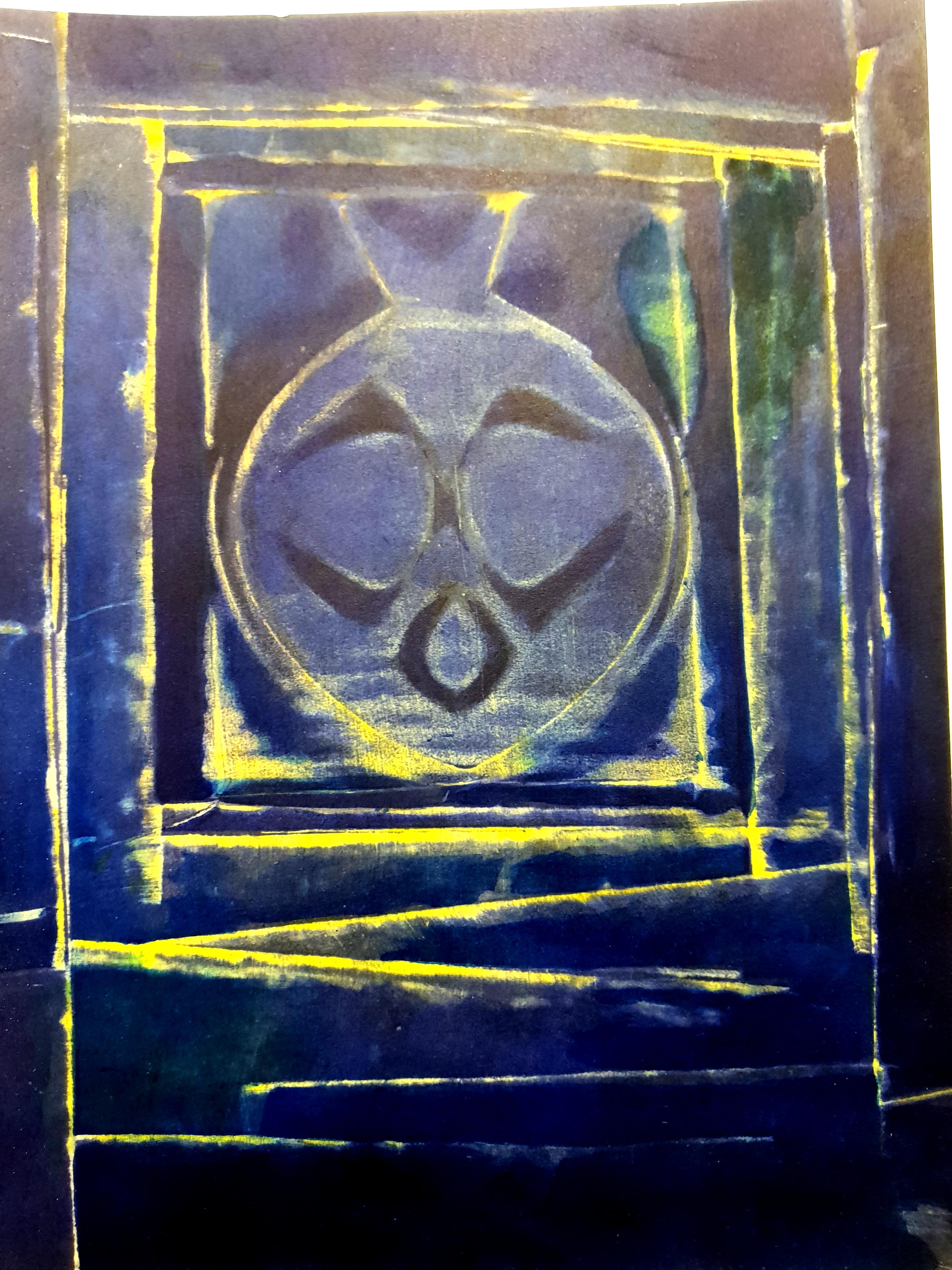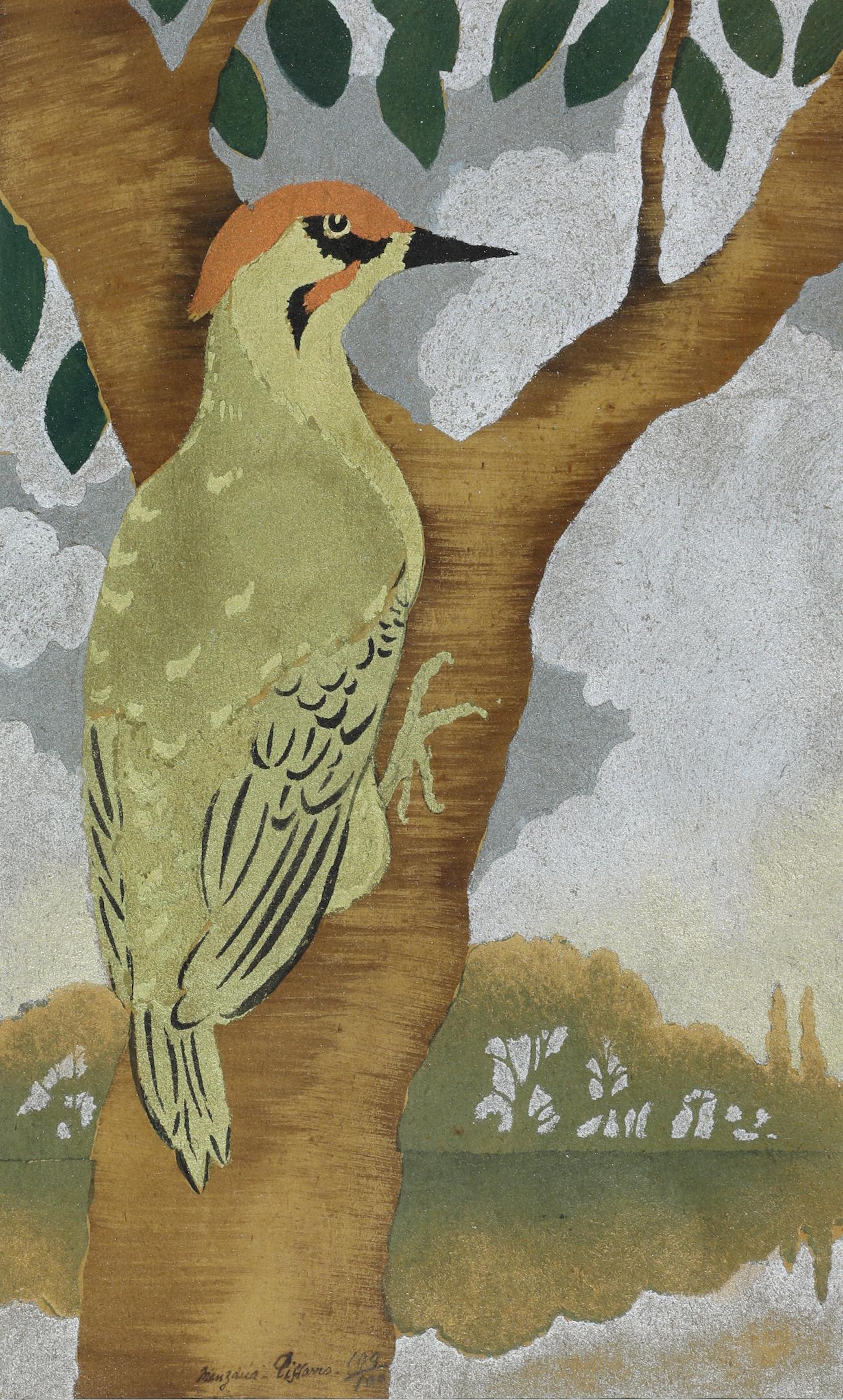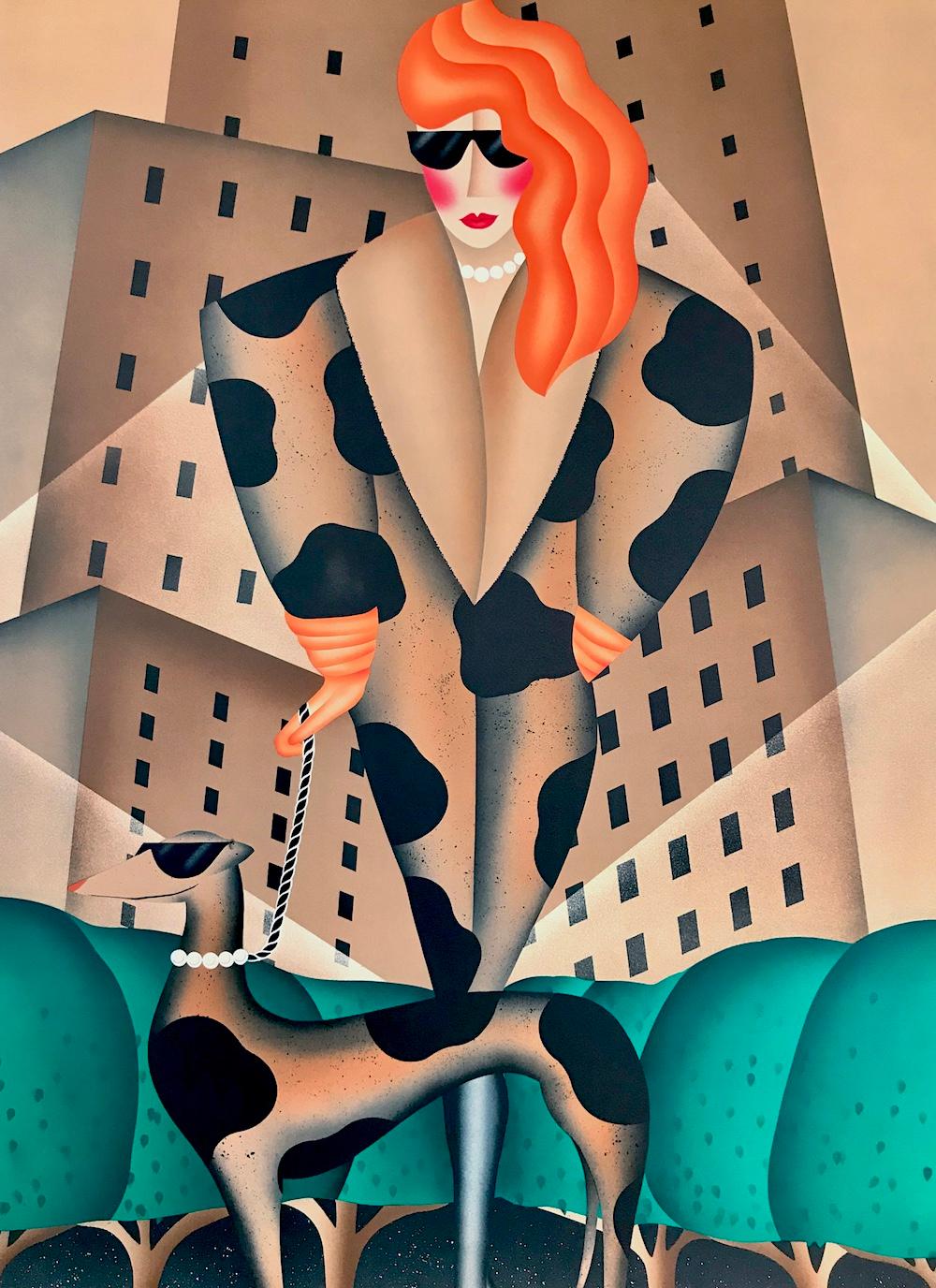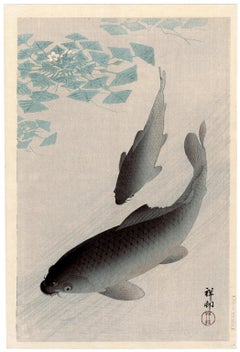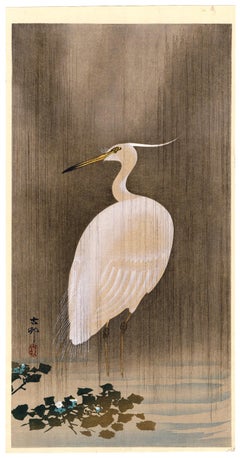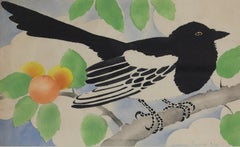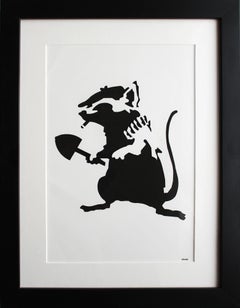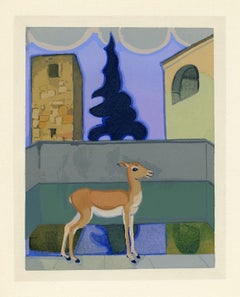
The Gazelle
View Similar Items
Want more images or videos?
Request additional images or videos from the seller
1 of 3
Simon BussyThe Gazelle1927
1927
About the Item
About the Seller
5.0
Recognized Seller
These prestigious sellers are industry leaders and represent the highest echelon for item quality and design.
Platinum Seller
These expertly vetted sellers are 1stDibs' most experienced sellers and are rated highest by our customers.
Established in 1995
1stDibs seller since 2016
254 sales on 1stDibs
Typical response time: 2 hours
Associations
International Fine Print Dealers Association
More From This SellerView All
- 'Carp and Water Chestnut' — Showa lifetime impressionBy Ohara KosonLocated in Myrtle Beach, SCOhara Koson (1877-1945), 'Carp and Water Chestnut', color woodblock print, 1926. A fine impression, with fresh colors, on cream Japan paper; the full sheet, in excellent condition. Signed 'Koson' with the artist’s red seal 'Koson'. Published by Watanabe Shozaburo. With the Watanabe 'C' seal in the lower right margin, indicating a lifetime impression printed between 1929-1942. Image size 13 1/2 x 7 1/4 inches (343 x 184 mm); sheet size 14 1/2 x 7 1/2 inches (368 x 191 mm). Archivally sleeved, unmatted. Literature: 'Crows, Cranes, and Camellias: The Natural World of Ohara Koson', Newland, Amy R.: Jan Perree & Robert Schaap, Leiden: Hotei Publishing, 2001. S39.1, pl 169. Collections: National Museum of Asian Art (Smithsonian), Smart Museum of Chicago (University of Chicago). In Japanese art, the carp represents good luck and good fortune. ABOUT THE ARTIST Koson Ohara...Category
1920s Showa Animal Prints
MaterialsWoodcut
- Leucippus Fallax (Buffy Hummingbird) — Original 1849 Hand-colored LithographBy John Gould and Henry Constantine RichterLocated in Myrtle Beach, SCJohn Gould, 'Leucippus Fallax' (Buffy Hummingbird), original lithograph with hand-coloring (not a reproduction), c. 1850. Signed in typeset 'J. Gould and H. C. Richter, del et lith.'...Category
1850s Realist Animal Prints
MaterialsLithograph
- 'Wading Egret' — Japanese Woodblock kacho-e, c. 1900By Ohara KosonLocated in Myrtle Beach, SC'Wading Egret', color woodblock, c. 1900 - 1910. Signed 'Koson' in black ink with the artist’s red seal beneath, lower left. A superb, skillfully-inked impression, with fresh colors,...Category
Early 1900s Naturalistic Animal Prints
MaterialsWoodcut
- Lion Défendant sa Proie (Lion Defending Its Prey)By Joseph HechtLocated in Myrtle Beach, SCJoseph Hecht, 'Lion Défendant sa Proie (Lion Defending Its Prey)', engraving, 1931, edition 50, Tonneau-Ryckelynck & Plumart 215. Signed and numbered '18/50' in pencil. A fine impres...Category
1930s Modern Animal Prints
MaterialsEngraving
- Whaling – 1900 Monumental Zoology Vintage LithographLocated in Myrtle Beach, SCJoseph Fleischmann, 'Whaling' (Hartingers Wandtafeln: Zoologie T. XXXII), monumental vintage color lithograph, 1900. Signed in the matrix, lower right. A superb, beautifully nuanced ...Category
Early 1900s Naturalistic Animal Prints
MaterialsLithograph
$1,125 Sale Price25% Off - Asie (Asia) from the series AtlasBy Joseph HechtLocated in Myrtle Beach, SCJoseph Hecht, 'Asie (Asia) from the series Atlas', engraving, 1928, edition c. 50, Tonneau-Ryckelynck & Plumart 162. Signed and annotated 'epreuve definitive' (final proof) in pencil...Category
1930s Modern Animal Prints
MaterialsEngraving
You May Also Like
- Magpie by Georges Henri Manzana Pissarro - PochoirBy Georges Henri Manzana PissarroLocated in London, GB*UK BUYERS WILL PAY AN ADDITIONAL 20% VAT ON TOP OF THE ABOVE PRICE Magpie by Georges Henri Manzana Pissarro (1871-1961) Pochoir 26.4 x 43.5 cm (10 ³/₈ x 17 ¹/₈ inches) Signed Manza...Category
20th Century Art Deco Animal Prints
MaterialsStencil
- Rat StencilBy BanksyLocated in Washington , DC, DCSold framed Banksy created this Rat stencil as an magazine insert very early in his art career in 2002. Rats are central characters in Banksy's oeuvre and here he give this rat plen...Category
Early 2000s Pop Art Animal Prints
MaterialsStencil
$2,850 - Peacocks by Georges Manzana Pissarro - Animal pochoirBy Georges Henri Manzana PissarroLocated in London, GBPeacocks by Georges Manzana Pissarro (1871-1961) Pochoir 31.3 x 49.5 cm (12 ³/₈ x 19 ¹/₂ inches) Signed with Estate stamp Manzana Pissarro and numbered 45/100 lower right Provenance...Category
1920s Animal Prints
MaterialsStencil
- (after) Max Ernst - Blue Bird - StencilBy (after) Max ErnstLocated in Collonge Bellerive, Geneve, CHMax Ernst (after) - Blue Bird - Stencil Published in the deluxe art review, XXe Siecle, 1958 Dimensions: 32 x 25 cm Publisher: G. di San Lazzaro. Max Ernst was born in Bruhl, a place near Cologne, in Germany. He was raised in a strict Catholic family, and both of his parents were disciplinarians who were dedicated to training their children into God-fearing and talented individuals. Although his father was deaf, Ernst learned so much from him, particularly when it comes to painting. In fact, much of his early years were lived under the inspiration of his father who was also a teacher. He was the one who introduced painting to Ernst at an early age. In 1914, Ernst attended the University of Bonn where he studied philosophy. However, he eventually dropped out of school because he was more interested in the arts. He claimed that his primary sources of interest included anything that had something to do with painting. Moreover, he became fascinated with psychology, among other subjects in school. Primarily, Ernst's love for painting was the main reason why he became deeply interested with this craft and decided to pursue it later on in his life. During his early years, he became familiar with the works of some of the greatest artists of all time including Claude Monet, Paul Cezanne and Vincent van Gogh. He was also drawn to themes such as fantasy and dream imagery, which were among the common subjects of the works of Giorgio de Chirico. During World War I, Ernst was forced to join the German Army, and he became a part of the artillery division that exposed him greatly to the drama of warfare. A soldier in the War, Ernst emerged deeply traumatized and highly critical of western culture. These charged sentiments directly fed into his vision of the modern world as irrational, an idea that became the basis of his artwork. Ernst's artistic vision, along with his humor and verve come through strongly in his Dada and Surrealists works; Ernst was a pioneer of both movements. It was Ernst's memories of the war and his childhood that helps him create absurd, yet interesting scenes in his artworks. Soon, he took his passion for the arts seriously when he returned to Germany after the war. With Jean Arp, a poet and artist, Ernst formed a group for artists in Cologne. He also developed a close relationship with fellow artists in Paris who propagated Avant-Garde artworks. In 1919, Ernst started creating some of his first collages, where he made use of various materials including illustrated catalogs and some manuals that produced a somewhat futuristic image. His unique masterpieces allowed Ernst to create his very own world of dreams and fantasy, which eventually helped heal his personal issues and trauma. In addition to painting and creating collages, Ernst also edited some journals. He also made a few sculptures that were rather queer in appearance. In 1920s, influenced by the writings of psychologist Sigmund Freud, the literary, intellectual, and artistic movement called Surrealism sought a revolution against the constraints of the rational mind; and by extension, they saw the rules of a society as oppressive. Surrealism also embraces a Marxist ideology that demands an orthodox approach to history as a product of the material interaction of collective interests, and many renown Surrealism artists later on became 20th century Counterculture symbols such as Marxist Che Guevara. In 1922 Ernst moved to Paris, where the surrealists were gathering around Andre Breton. In 1923 Ernst finished Men Shall Know Nothing of This, known as the first Surrealist painting. Ernst was one of the first artists who apply The Interpretation of Dreams by Freud to investigate his deep psyche in order to explore the source of his own creativity. While turning inwards unto himself, Ernst was also tapping into the universal unconscious with its common dream imagery. Despite his strange styles, Ernst gained quite a reputation that earned him some followers throughout his life. He even helped shape the trend of American art during the mid-century, thanks to his brilliant and extraordinary ideas that were unlike those of other artists during his time. Ernst also became friends with Peggy Guggenheim, which inspired him to develop close ties with the abstract expressionists. When Ernst lived in Sedona, he became deeply fascinated with the Southwest Native American navajo art. In fact, the technique used in this artwork inspired him and paved the way for him to create paintings that depicted this style. Thus, Ernst became a main figure of this art technique, including the rituals and spiritual traditions included in this form of art. Pollock, aside from the other younger generations of abstract expressionists, was also inspired by sand painting of the Southwest...Category
1950s Surrealist Animal Prints
MaterialsStencil
- After Georges Braque - Oiseaux - PochoirBy Georges BraqueLocated in Collonge Bellerive, Geneve, CHafter Georges Braque Oiseaux Color Pochoir on Paper Published in the deluxe art review, XXe Siecle (issue number 11 "Les nouveaux rapports de l'art et de la nature") 1958 Dimensions:...Category
1950s Modern Figurative Prints
MaterialsStencil
- Three Hens by Georges Manzana Pissarro - Animal stencilBy Georges Henri Manzana PissarroLocated in London, GBThree Hens by Georges Manzana Pissarro (1871-1961) Pochoir 31.8 x 48.3 cm (12 ½ x 19 inches) Signed with Estate stamp and épreuve d'état Provenance Private Collection, London Artis...Category
19th Century Post-Impressionist Animal Prints
MaterialsStencil


